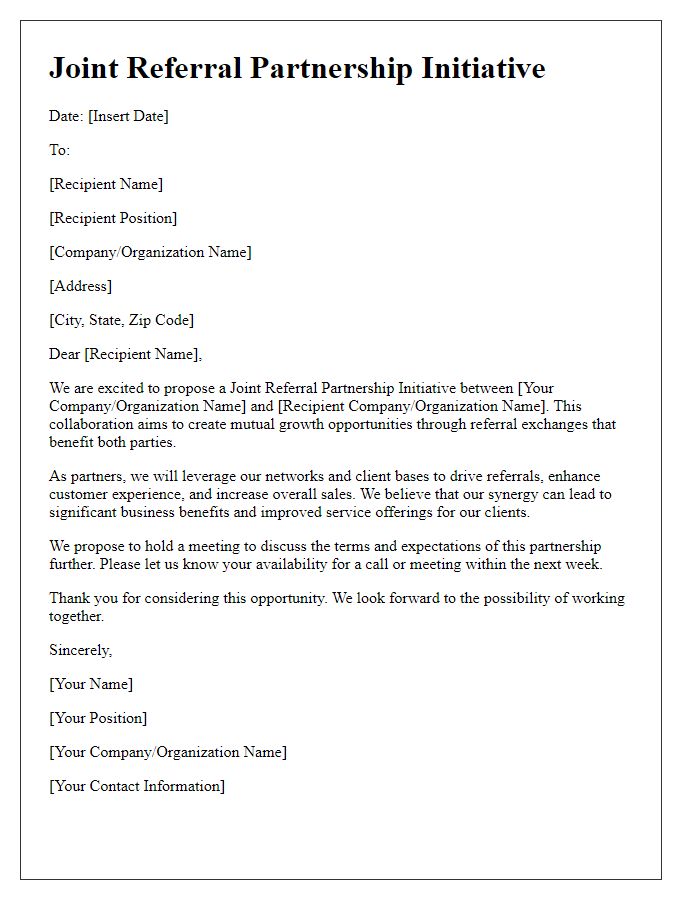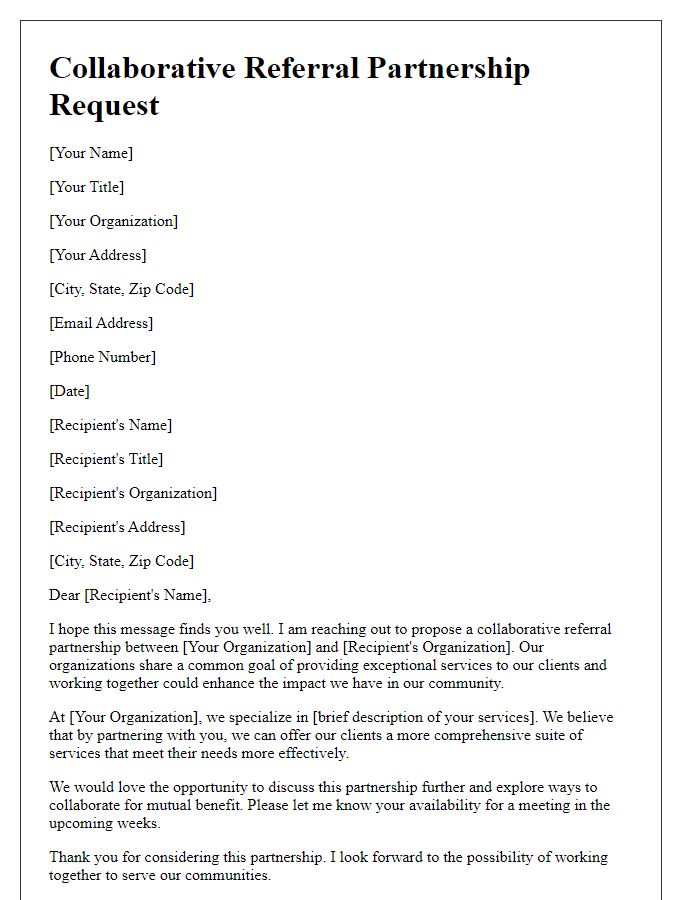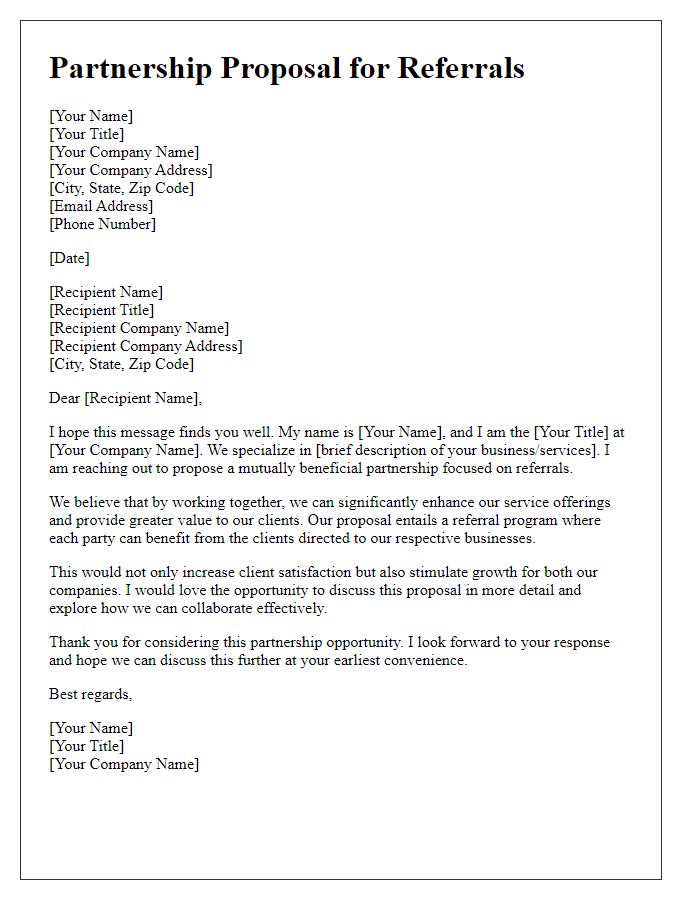Are you looking to expand your business network and enhance your referral partnerships? Our latest article delves into the essential components of crafting a compelling letter for a referral partnership proposal. We'll guide you through practical tips and examples that can elevate your approach and lead to successful collaborations. If you're ready to strengthen your connections and boost your growth, keep reading to uncover valuable insights!

Clear Introduction
A referral partnership proposal aims to establish a mutually beneficial relationship between businesses, resulting in increased client acquisition and revenue growth. Such proposals often outline the benefits of collaboration, including shared resources, cross-promotional opportunities, and enhanced service offerings. In a competitive market, a well-structured partnership can leverage each party's strengths, creating a compelling case for prospective referrals. Key aspects may include the proposed referral process, commission structures, and performance metrics to gauge success. Establishing clear communication channels ensures alignment between partners, fostering a successful long-term relationship.
Value Proposition
A referral partnership proposal emphasizes value creation for both parties involved. The primary goal is to establish a channel where businesses can mutually benefit by referring clients to each other. This collaboration can diversify revenue streams, expand market reach, and enhance customer loyalty. For instance, a local real estate agency in San Diego, California can partner with a home staging company to offer premium services to home sellers, thus increasing sales potential. Additionally, the real estate agency could earn a commission on each referral, while the staging company gains new clients, creating a symbiotic relationship. Regularly scheduled reviews of partnership metrics, such as referral conversion rates and sales growth, become crucial in assessing the effectiveness of the partnership. This ensures continuous improvement and alignment with shared objectives, fostering long-term success.
Benefits and Incentives
A referral partnership proposal can significantly enhance business growth and customer reach, providing mutual benefits for both parties involved. Establishing such partnerships can lead to increased revenue streams through commission structures, where businesses earn a percentage of sales generated through referrals. Incentives such as exclusive discounts or promotional offers incentivize partners to actively engage in the referral process. Furthermore, expanding brand recognition within wider networks enables access to new customer segments that may have been unreachable otherwise, allowing both businesses to strengthen their market position. By leveraging shared resources, such as social media platforms or email marketing campaigns, partners can create collaborative marketing strategies that enhance engagement and customer loyalty, driving long-term growth.
Call to Action
A referral partnership proposal requires a strategic outline highlighting mutual benefits, target audience, and specific goals. Engaging potential partners can boost business growth significantly. Emphasizing shared objectives can enhance collaboration opportunities. Demonstrating how referrals can yield substantial leads, ideally through statistics showcasing conversion rates (e.g., 10-30% increase in client acquisition) can capture attention. Additionally, outlining potential rewards or commissions per successful referral encourages participation. Tailoring the pitch to align with the partner's values and market positioning increases relevance. Setting clear timelines can establish a sense of urgency, prompting the potential partner to take actionable steps immediately.
Contact Information
A referral partnership proposal requires a clear presentation of contact information to ensure effective communication between involved parties. Essential details include the full name of the contacting individual, their position within the organization, and the company name, which is crucial for establishing brand authority. The organizational address, including city, state, and zip code, adds geographical context, while the official email address ensures direct digital communication channels are available. A work phone number facilitates immediate contact, especially for urgent discussions regarding the partnership. Lastly, an optional section for social media handles, such as LinkedIn or Twitter, can enhance visibility and connectivity within professional networks.













Comments